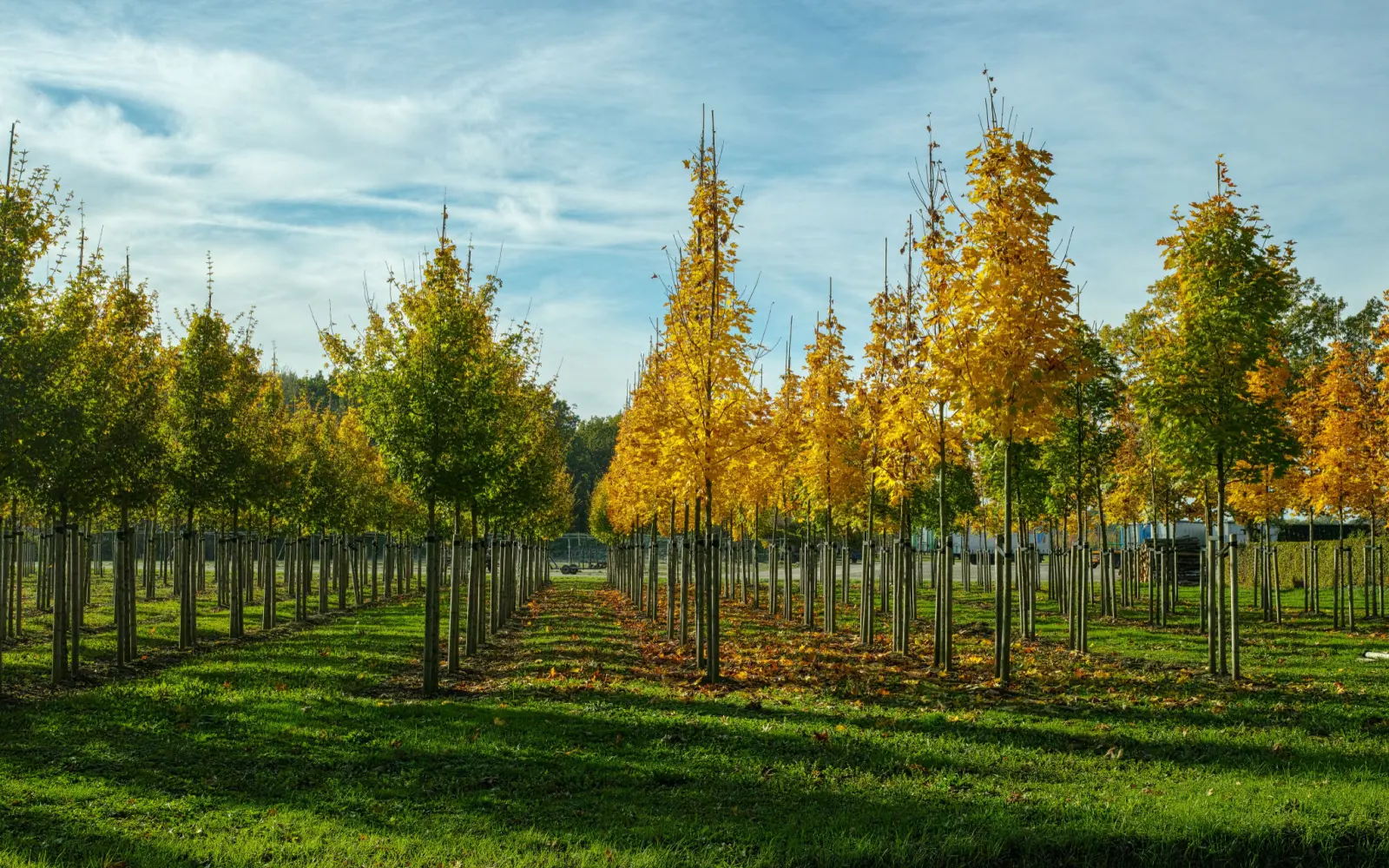Come to think of those hot summer days when you prefer taking your summertime snacks in a shady spot, and you’ll surely admit that you’ve fond memories of trees.
Below, we’ll highlight the different types of trees, how you can identify them, and fun facts about them.
The Benefits of Trees in Your Yard
Trees are nature’s most important asset. They supply sufficient oxygen to the surroundings while making the environment look lush and green.
Here are some essential facts about trees:
- The rings in a tree reveal its age and show the signs of climatic changes, such as temperature and severe drought
- Different types of trees add different benefits to the surrounding environment, not to mention providing different aesthetics.
- Trees release phytoncides, a feel-good chemical that can make you feel happier
- Trees can communicate with each other, send distress signals, and swap nutrients
- A giant oak tree can take 1000 gallons of water daily
- There are over 60,000 tree species on Planet Earth
- Trees are the longest-living beings on earth, with Methuselah, the oldest tree, being 4,800 years old
12 Types of Trees to Add Beauty to Your Yard
The world of trees is indeed diverse. Trees come in all shades, sizes, and shapes: some are green, others are multicolored, some are rounded, and others are conical.
From flowering and fruit trees to deciduous and coniferous trees, here are the various trees to help you connect with nature big time.
1. White Oak (Quercus Alba)
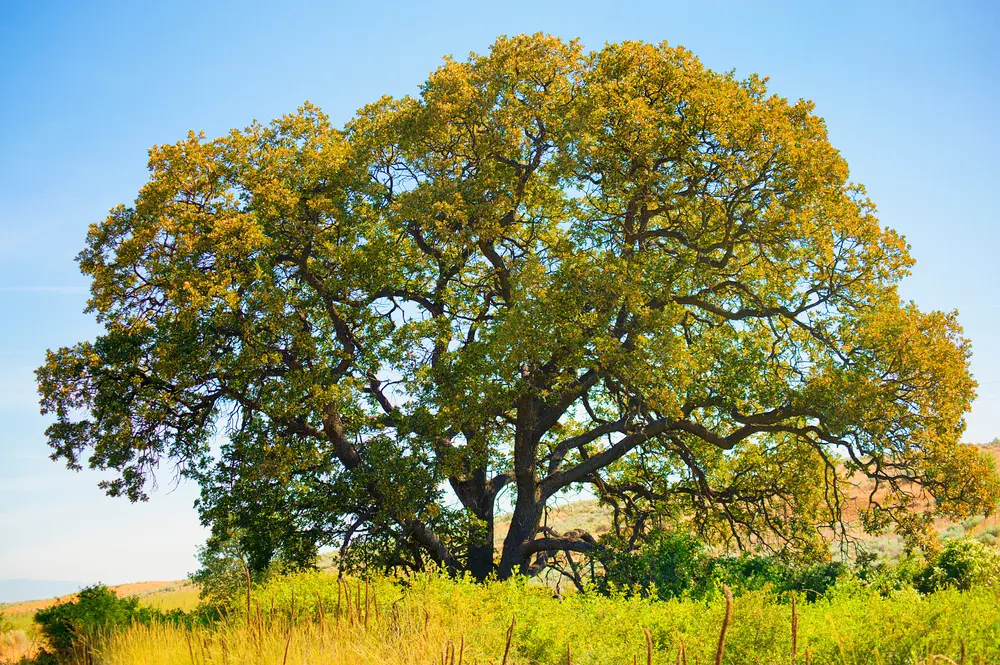
Dee Browning/Shutterstock
Ever heard of a white oak tree that eventually fell in 2002, aged 450 years? Its name was Wye oak. The white oak has a significant presence; it grows on average 80 to 100 feet tall and has a diameter of between two and four feet.
The tree lives for an average of 200 to 300 years. It produces acorns, an important food source for mammals and birds, including rabbits, black bears, woodpeckers, and turkeys. The white oaks are gentle trees whose fall colors dazzle everyone who sees them.
They get their name from the whitish color of their leaves and undersides, which distinguishes them from other oaks. These North American natives have a natural habitat extending from southern Canada to Texas and Minnesota.
2. Black Willow Tree (Salix Nigra)
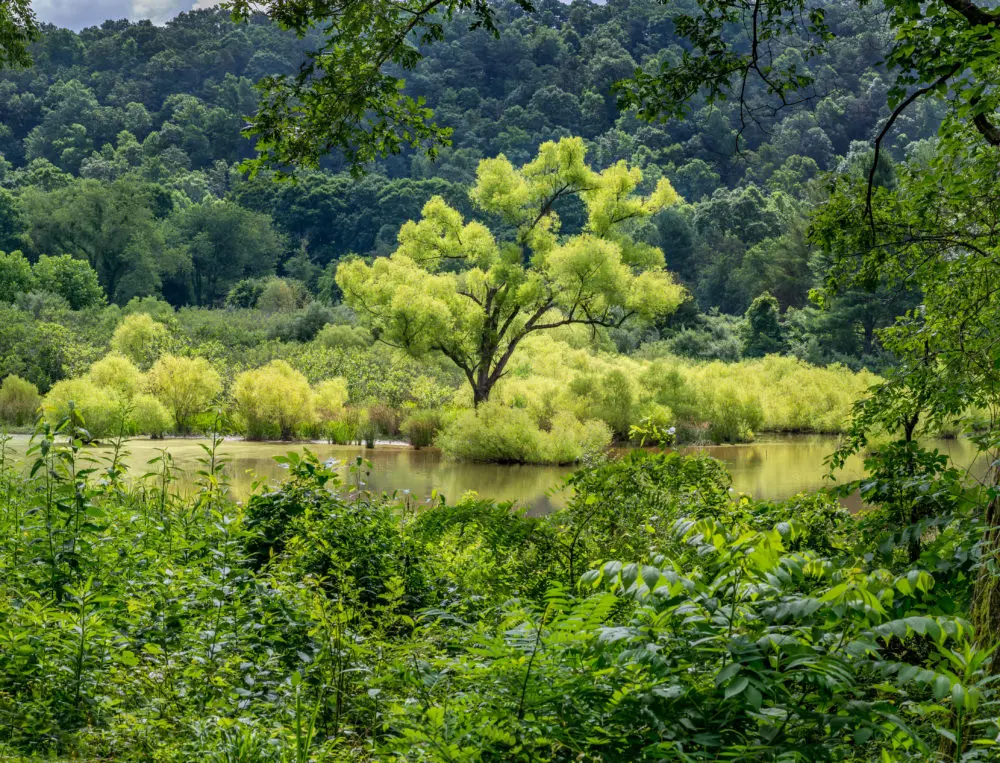
Gerry Bishop/Shutterstock
The black willow, also known as swamp willow, is a willow tree species. It’s a large tree with an average of four feet in diameter.
The United States and Canada are home to over 100 species of black willow. These large branching trees have flexible stems that form a round-topped, open, and broad crow.
A black willow tree grows to an average height of 75 to 100 feet. Its bitter-tasting roots were used as a substitute for quinine in ancient times. The tree also has salicylic acid, similar to the compound aspirin.
Black willow trees are known to be medicinal and can help in the treatment of:
- Headache
- Fever
- Cough
- Cold
3. Swamp White Oak (Quercus Bicolor)
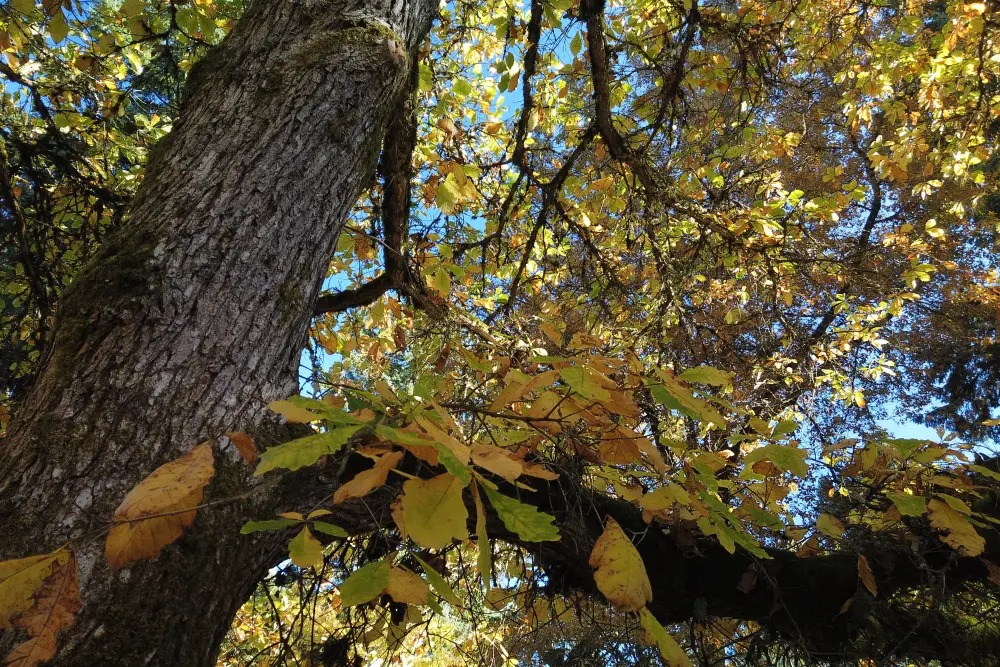
Sean Attilio Learn/Shutterstock
Like other oak trees, white swamp oaks are important for hungry migratory birds that rely on the tasty insects hiding under their rough backs.
The migratory birds also feed on the swamp white oak acorns. The leaves of this beautiful summer shade tree sport a lovely orange or gold hue in the fall.
The swamp white oak takes its scientific name, Quercus bicolor, from its two-toned leaves, which have a shiny dark green above with a whitish surface below, flashing in the wind.
This medium-sized deciduous tree grows to an average height of 50 to 60 feet. The tree is native to Canada and the Midwest of the United States.
4. Indian Cork Tree (Millingtonia Hortensis)
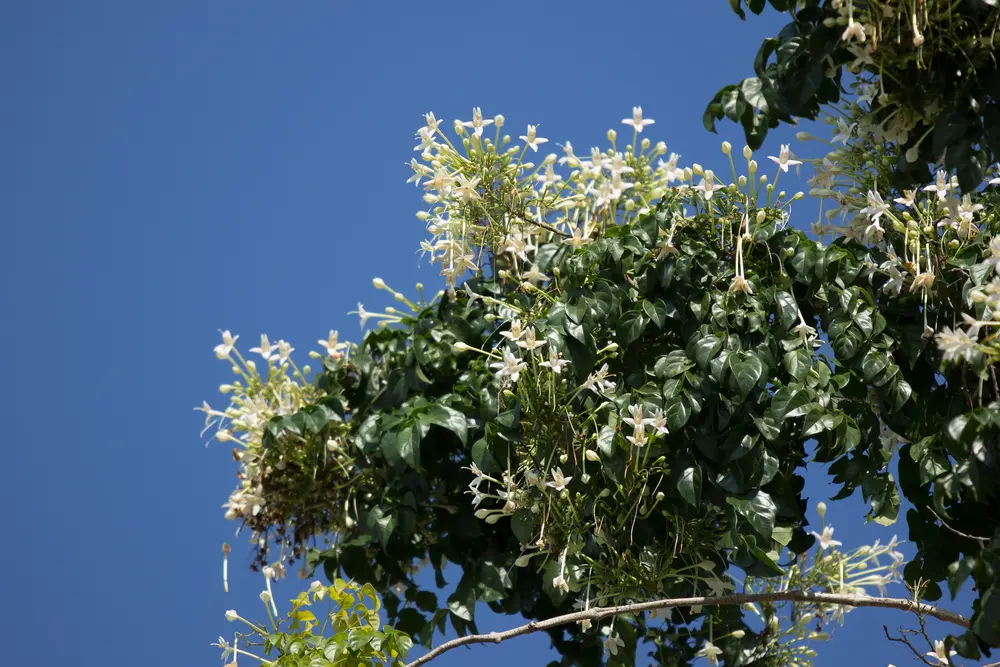
Nitinut380/Shutterstock
The cork tree is a tall deciduous tree native to Central India. It’s primarily found in tropical forests and India’s Sultanpur National Park. It can grow to an average of 75 to 85 feet and has white tubular flowers with incredible fragrance.
These flowers grow in the night and shade off in the early morning. People refer to the cork tree using a variety of names depending on the locality.
These names include kavudi, kat malli, karkku, mini chameli, betati nim, nim chameli, and akalas nim, among others. Herbalists use the tree’s strong trunk and corky bark as a holistic medication. They’re a remedy for cough and lung diseases.
5. Sugar Maple (Acer Saccharum)
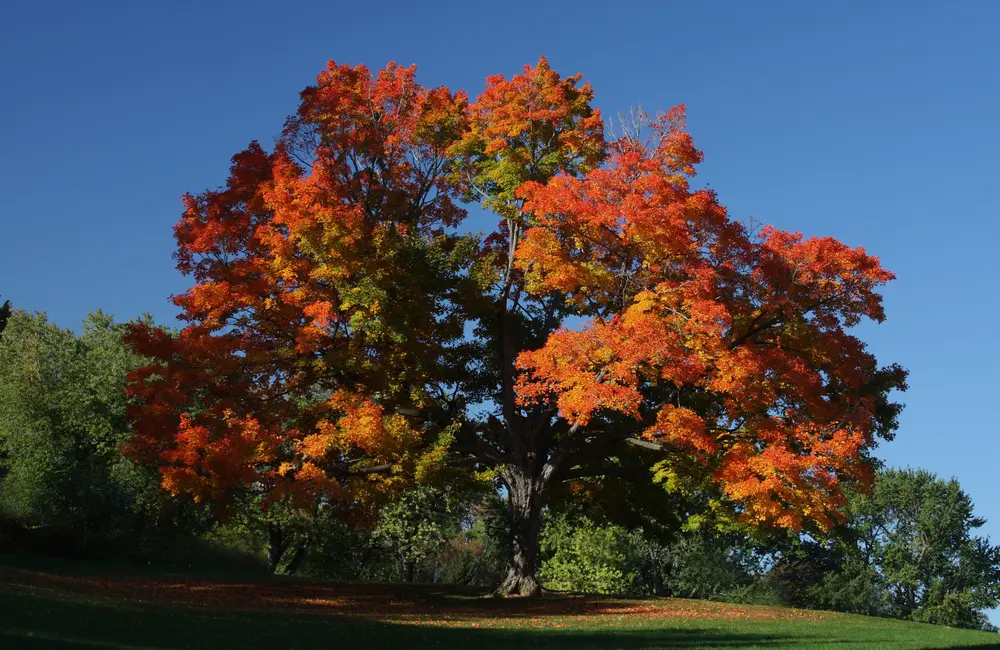
Mircea Costina/Shutterstock
The sugar maple is a large, slow-growing deciduous tree native to the eastern United States and Canada. It flourishes in the well-drained soils of the Adirondack Mountains, with a mature sugar maple being large with a straight, single trunk.
This species is a dominant tree in the northern hardwood forest, with a life span between 200 and 300 years. Sugar maple is classified among Canada and the USA’s most important ecological and economical trees.
Other names for the sugar maple include
- The bird’s eye maple
- Sugar tree
- Head maple
- Rock maple
- Hard maple
The sugar maple is a National Tree in Canada and a State Tree in New York.
6. Dogwood Tree (Cornus Florida)
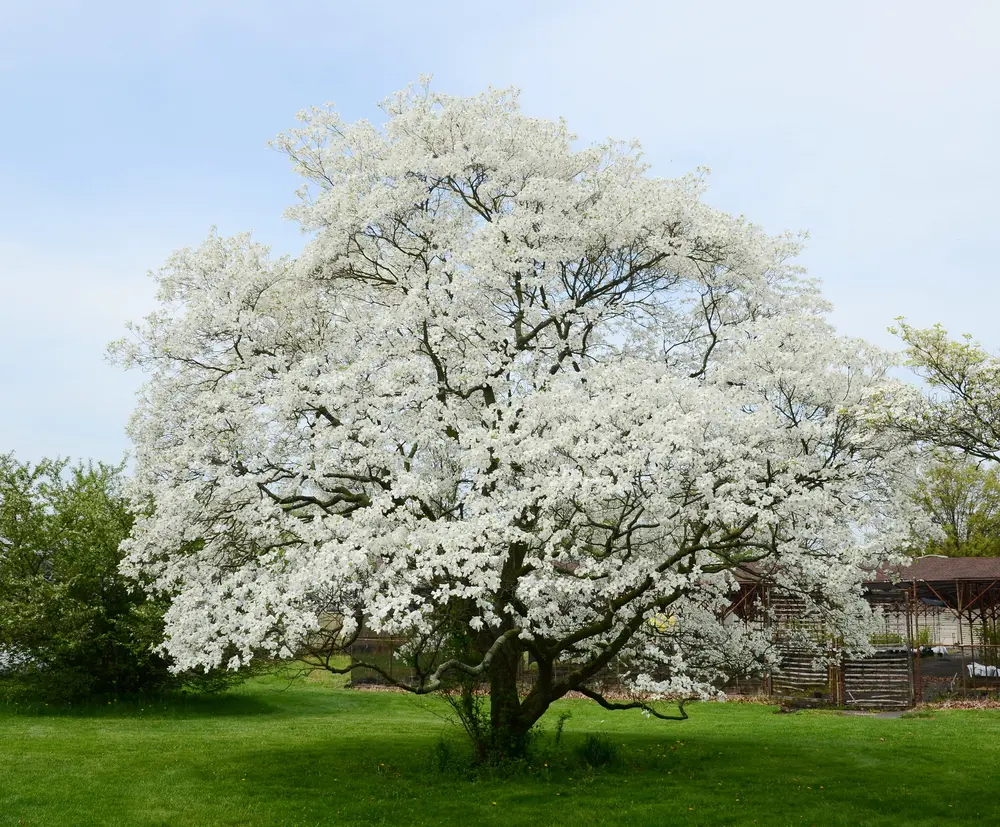
Virunja/Shutterstock
The dogwood tree is native to North America. Legend has it that Jesus Christ was crucified on a cross made from dogwood. It’s believed that God cursed this tree so that it would never again grow tall enough to construct crucifixion crosses.
Dogwood trees are popular in landscape paintings. Some states with dogwood as a State Tree include North Carolina, Missouri, and Virginia. Dogwood trees are prone to fungal diseases and insect damage.
Their flowers range from white through pink to scarlet. Despite being small-sized ornamentals, dogwoods never fail aesthetically. The tree’s hard and coarse wood makes it ideal for making
- Jewelry boxes
- Mallets
- Butchers’ blocks.
7. Teak Tree (Tectona Grandis)
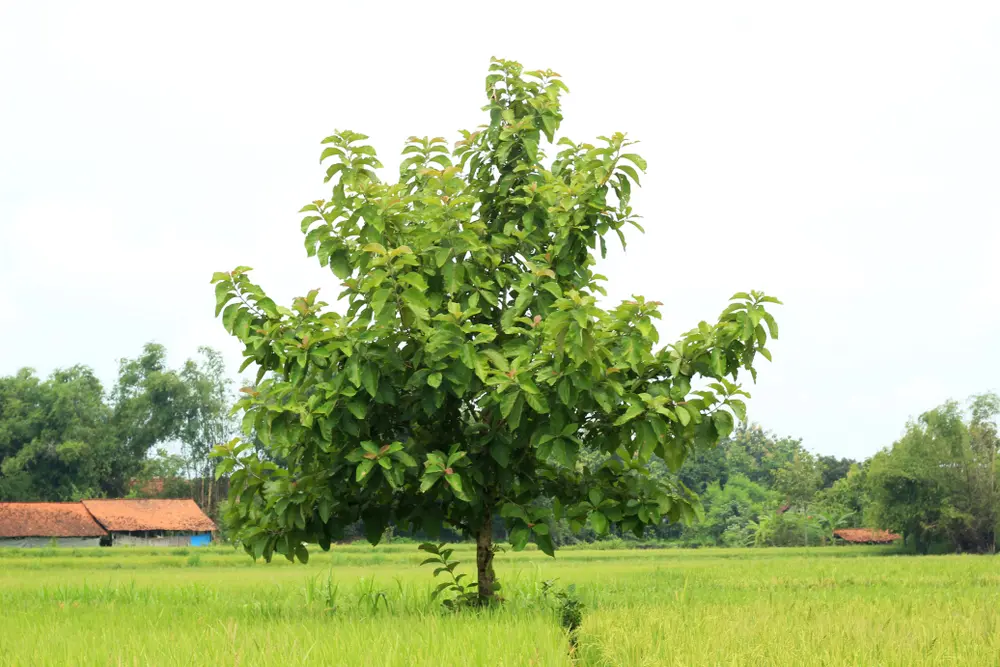
Intellegent Design/Shutterstock
The teak tree is evergreen and generally tall, with an average height of 100 feet. This large deciduous tree belongs to the Verbenaceae tree family.
The tree produces one of the most valuable timbers, with a beautiful golden yellow color and a pleasant, strong aromatic fragrance.
The teak tree is native to Thailand, Burma, and India. Teak trees’ large leaves are similar in size to tobacco trees. Its flowers are white and bluish, and its fruits are of a papery, light brown color.
Teak trees are widely used in making boats, furniture, and windows and doors for houses. Its bark is medicinal and can be used to treat digestion problems, fevers, stomach problems, and headaches.
8. Shagbark Hickory (Carya Ovata)
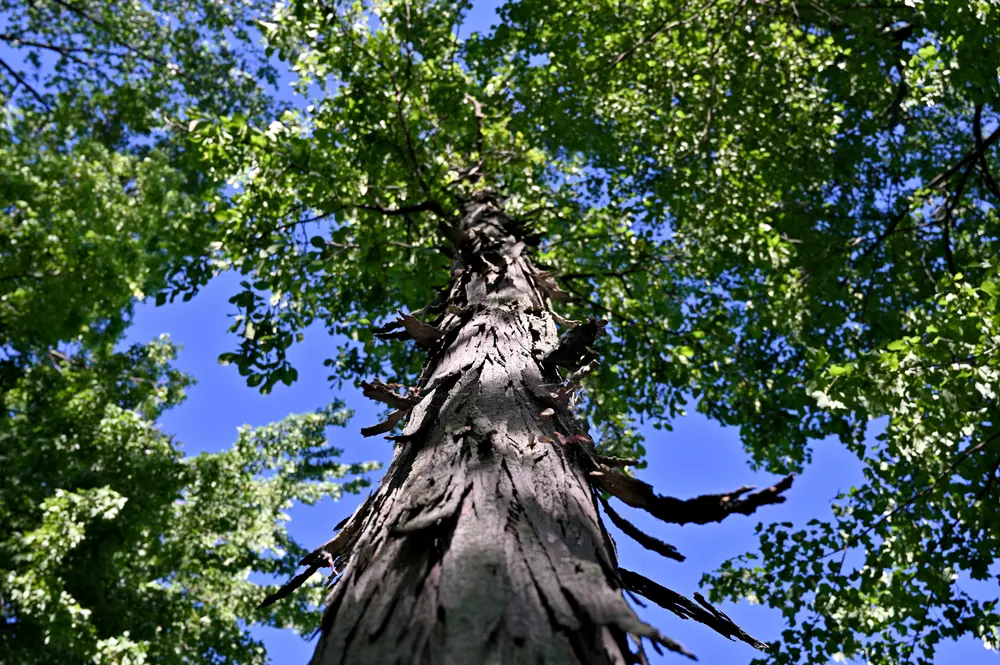
Elmar Langle/Shutterstock
The dead giveaway of a shagbark tree is its leaves, which typically resemble tulips when they emerge from large, expanding petal buds in the spring.
If you spot a tree with gray bark peeling with long vertical curls along the trunk, it’s likely shagbark hickory. Shagbark hickory leaves are between 15 and 20 centimeters long and are composed of five leaflets on a central stalk.
These trees grow only in southern Ontario, along the St. Lawrence River. Their average height is 80 to 100 feet. A typical shagbark hickory lives for about 200 years.
9. Banyan Tree (Ficus Benghalensis)
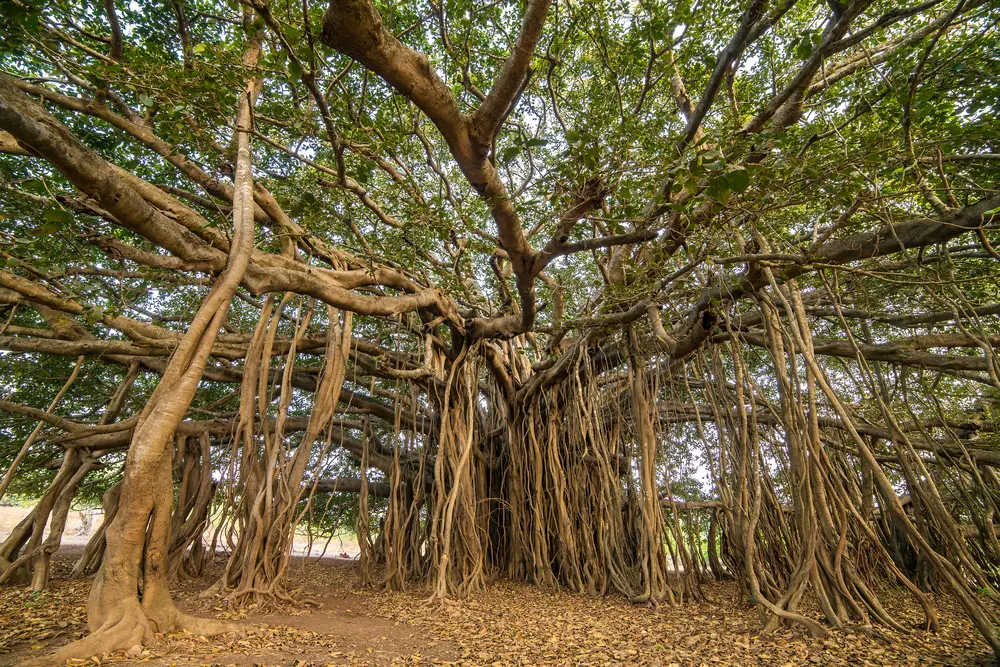
Mazur Travel/Shutterstock
The banyan tree is known to be India’s national tree. It has aerial roots and a large canopy. This tree represents fertility and life; hence, Buddhists and Hindus traditionally worshiped it.
The banyan tree thrives in a tropical climate. Banyan tree wood is traditionally used as firewood. Commercially, its wood is used for paper processing. The tree is medicinal and has both antifungal and antibacterial properties.
Herbalists use its roots to lower sugar levels in the blood. The roots are further proven to boost human immunity while lowering cholesterol levels.
10. Redbud Tree (Cercis Canadensis)
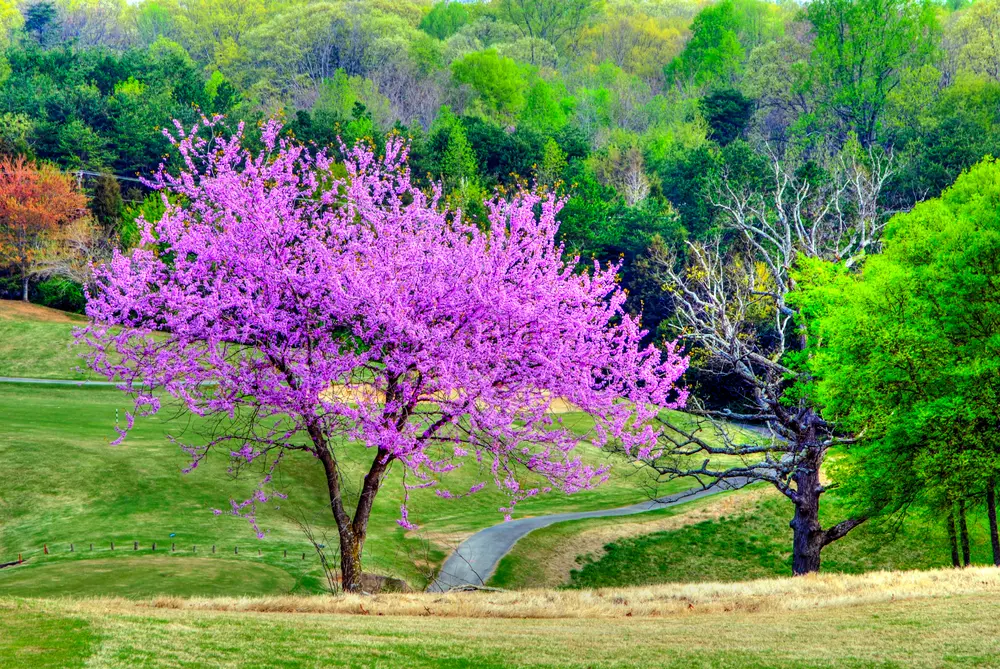
Fine Art Productions/Shutterstock
You can quickly identify a redbud in the spring when its buds burst open into tiny, purple blooms, lining the branches for two to three weeks. This small tree is native to eastern North America.
During the fall, its heart-shaped leaves turn golden yellow. This wondrous native species, growing to a height of 30 feet, can be a perfect addition to your backyard.
Redbud trees bloom early, making them an important food source for pollinators such as early spring butterflies. You can add flower buds of redbuds to pancakes, bread, and salads. They have a slightly sour taste and are high in vitamin C.
11. Tulip Tree (Liriodendron Tulipifera)
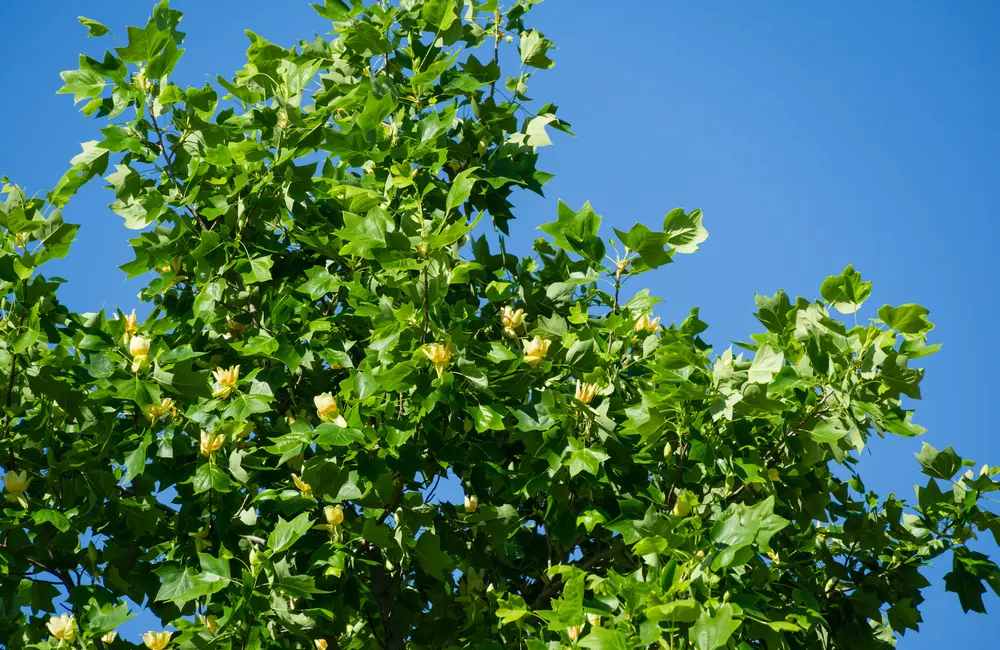
Marinodenisenko/Shutterstock
The tulip tree is a large, magnificent, stately tree known for its beautiful, unique blossoms. This tall tree, growing to a height of 180 feet, has upright, curving branches and a columnar trunk with rigid, light brown bark.
The Indian tulip is found in lower, dry to wet forests. Its leaves are heart-shaped, while its flowers are cup-shaped. This evergreen tree is fast-growing, with straight, growing branches along with thick bark. The tree thins out as it grows older.
12. Honey Locust (Gleditsia Triacanthos)
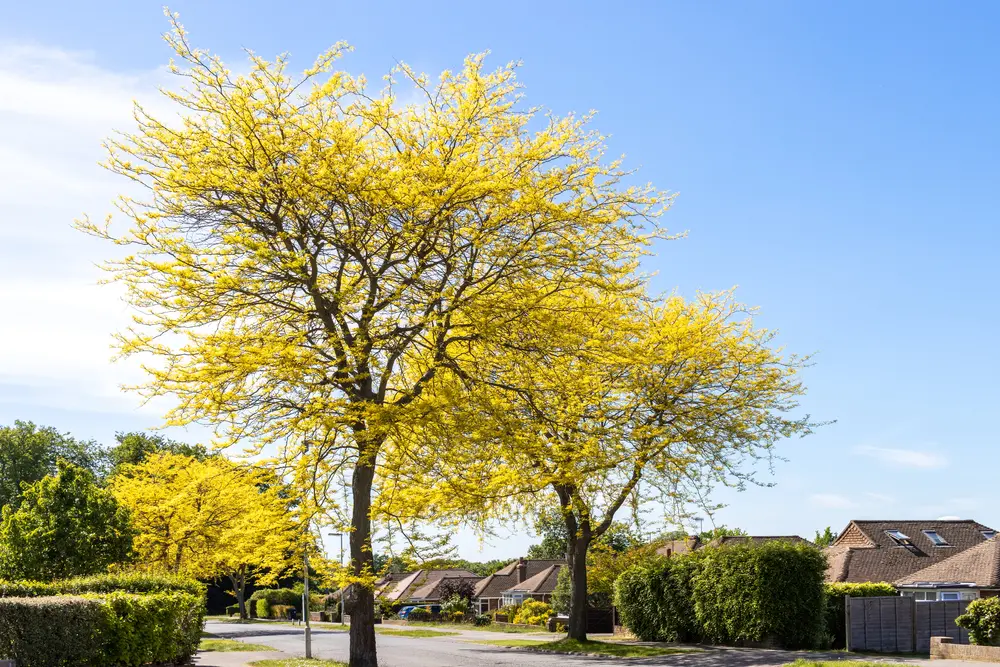
Philip Bird LRPS CPAGB/Shutterstock
The honey locust is a large deciduous tree growing to a height of between 30 and 70 feet. It’s a bean family tree with an open, spreading crown and a short trunk.
Honey locust is also known as thornless honey locust, three-thorn acacia, sweet locust, and sweet bean. Its pine-textured, pinnately compound leaves give it a delicate silhouette.
The thornless honey locust has a deep taproot growing 10 to 20 feet deep and a few lateral roots. It also has a long leaf retention period. If you plant a honey locust in your front yard, have enough room for its mature size.
Frequently Asked Questions
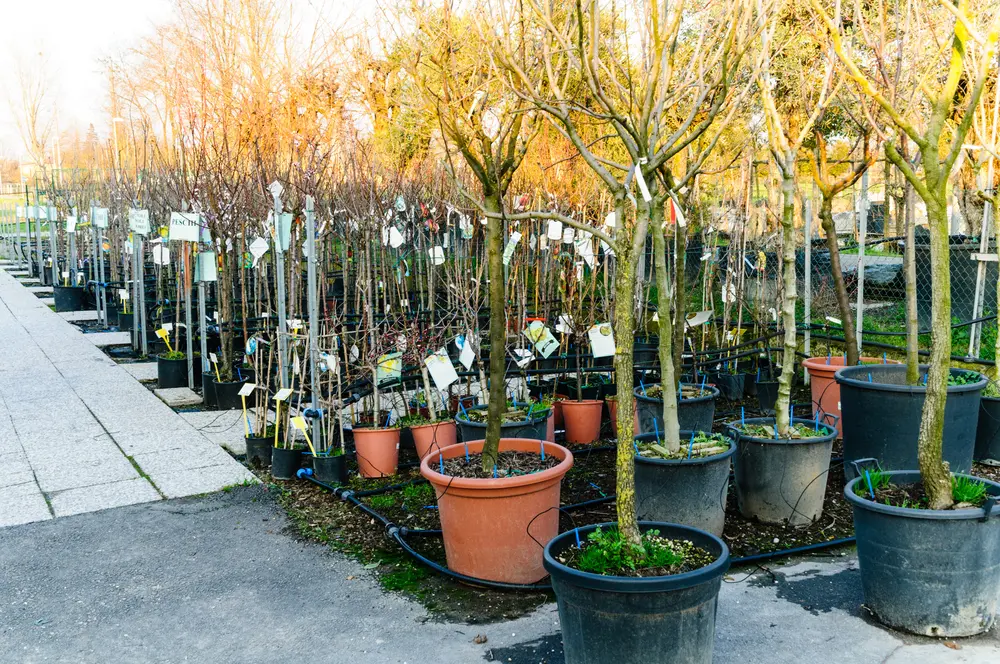
Giancarlo Polacchini/Shutterstock
Here are some FAQs about the various types of trees we covered above:
What are the benefits of planting trees on my property?
Trees curb appeal and add character to your home.
Other benefits include attracting pollinators like insects and bees, providing shade from the sun, protecting other plants in your garden from flooding, improving air quality, and increasing property value.
How can I care for my trees during the winter?
The best way to care for your tree is to ensure you add mulch to the surrounding area. This way, you’ll provide them with a moisture-retaining layer of protection.
What do I need to know about fertilizing trees?
First, choosing the right fertilizer for your tree is of utmost importance. A little research on a variety of tree fertilizers is essential.
A fully mature tree doesn’t need fertilizer unless it’s having growth problems. Fertilizing young trees gives them the nutrients they need to grow and bloom.
Why is my tree not blooming?
Your tree may not bloom if you prune it incorrectly or fail to prune it at the appropriate time. For instance, if your tree blooms in the spring and you prune it in the early spring, it may fail to bloom as it should. Your tree may also not bloom if it lacks the essential nutrients.
What are the indications that my tree is sick?
Several signs can help you determine whether your tree is unhealthy or dying.
These include:
- Stunted leaf growth
- Yellowing leaves
- Dropped branches
- Cracks in the trunk
- Holes in leaves
- Wilting
So, what are some different types of trees, and why are they beneficial?
As discussed, there are many different types of trees, ranging from the common oaks to the more elusive honey locust. Trees play a critical role in protecting the environment and fostering healthy communities.
They cool our surroundings, add value to our property, and improve our physical and mental health. Planting trees is the most crucial step towards combating climate change, starting with your backyard.

